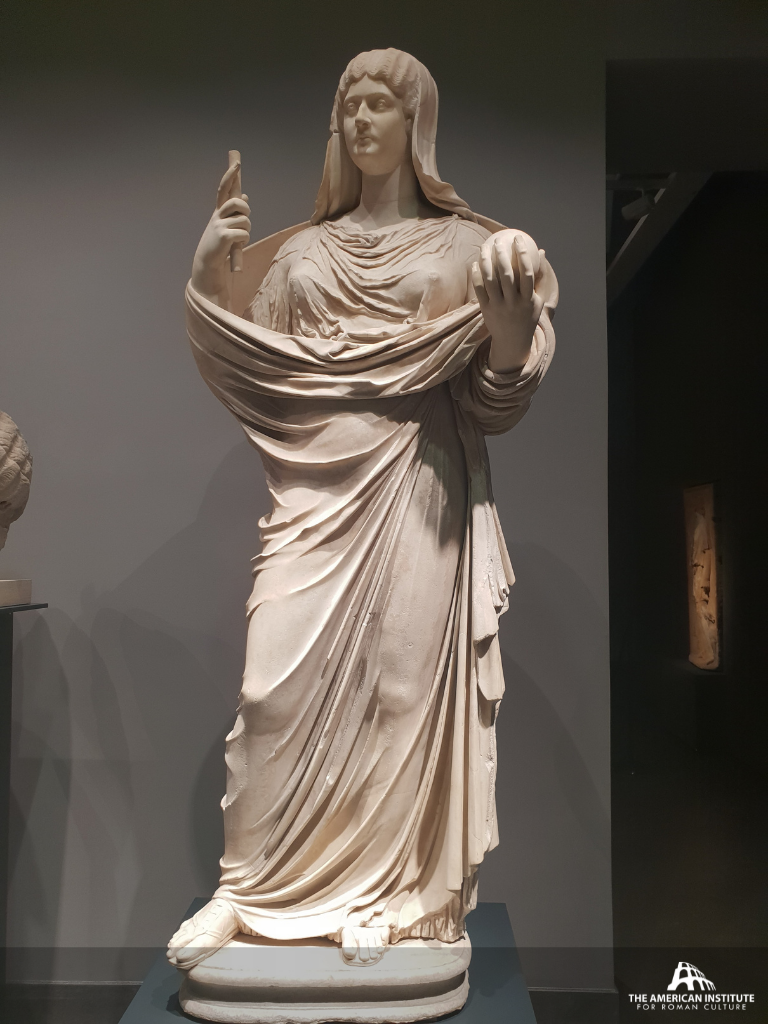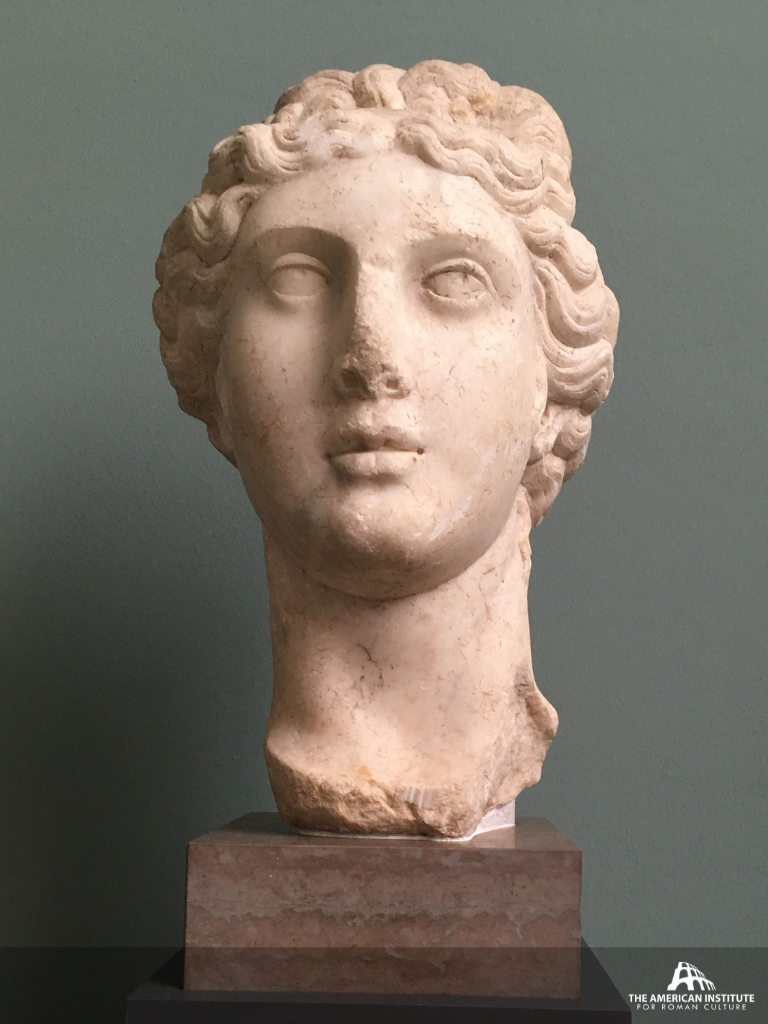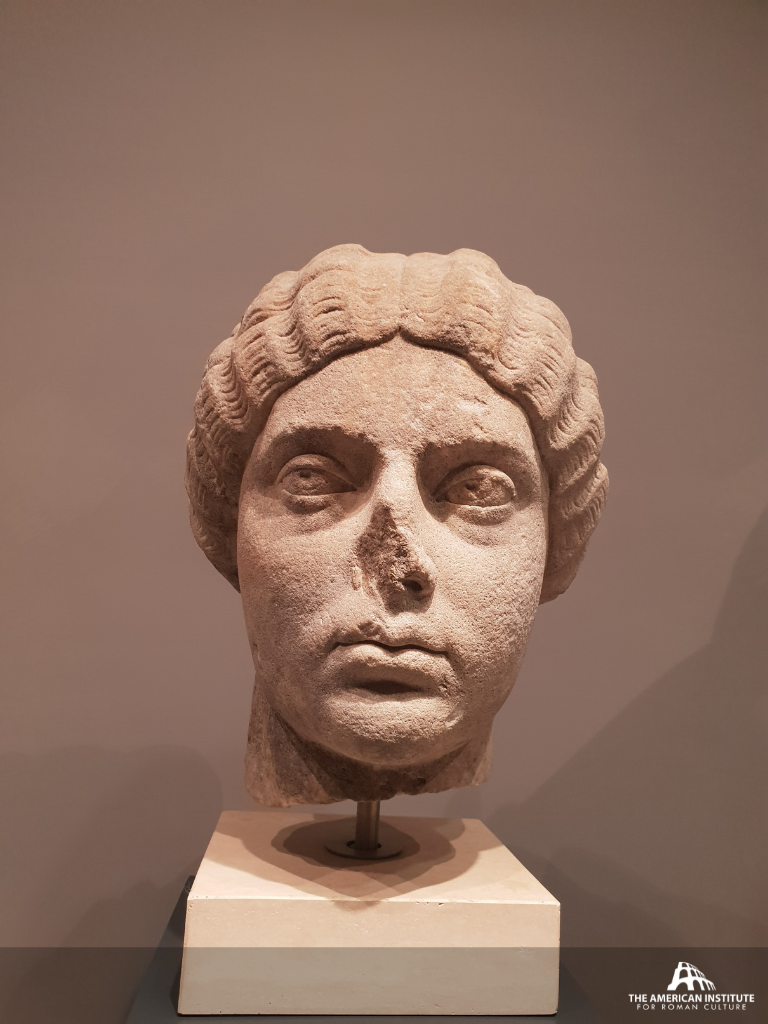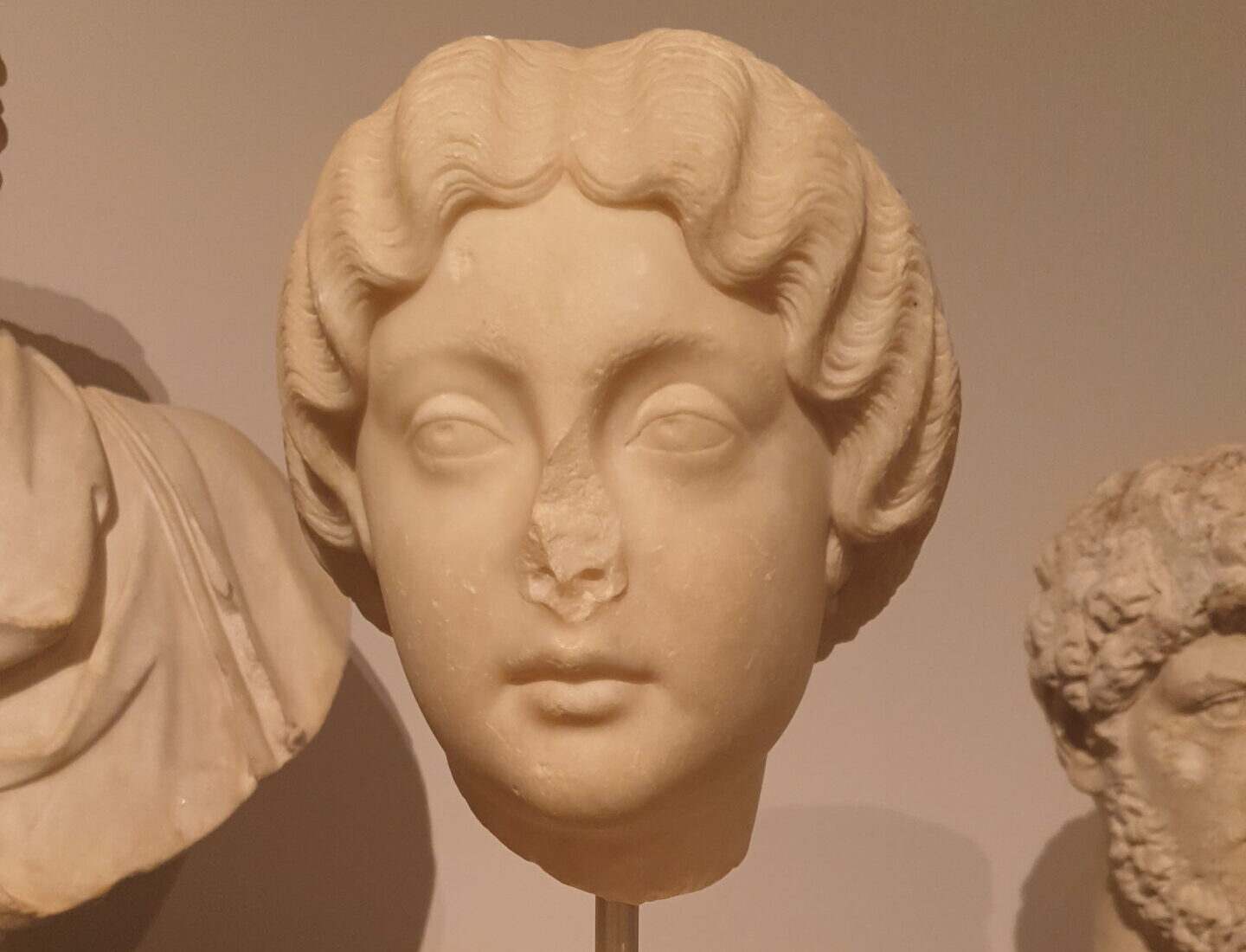Official Name: ANNIA GALERIA FAUSTINA AUGUSTA MINOR
Birthdate: September, circa 130 CE.
(Historia Augusta, Life of Marcus Aurelius, 6.6) (Dura-Europos Military Calendar – Feriale Duranum)
Birthplace: Unknown.
Reign: Marcus Aurelius, Faustina’s husband, became emperor in 161 CE. She held the title of empress until her death in 175 CE.
(Historia Augusta, Life of Antoninus Pius, 12.4) (Historia Augusta, Life of Marcus Aurelius, 7 & 26)
Marriages:
Marcus Aurelius (145 – 175 CE)
(Historia Augusta, Life of Marcus Aurelius, 7 & 26)
Children: Faustina and Marcus Aurelius had thirteen children together. Only six survived till adulthood.
Annia Aurelia Galeria Lucilla (daughter)
Annia Aurelia Galeria Faustina (daughter)
Annia Aurelia Fadilla (daughter)
Annia Cornificia Faustina Minor (daughter)
Lucius Aurelius Commodus Antoninus (son)
Vibia Aurelia Sabina (daughter)
Death:
Faustina died in 175 CE in Halala, a city in the Taurus Mountains in the province of Cappadocia (modern-day Turkey). The cause of her death is disputed. Some ancient historians believe she died of a sudden illness, while others claim she committed suicide.
(Historia Augusta, Life of Marcus Aurelius, 26) (Cassius Dio, Roman History, 72.29)

Statue of Faustina Minor, Palazzo Massimo, Rome, February 2019

Portrait of Faustina Minor Copenhagen Glyptothek, Copenhagen, October 2018

Head of Faustina Minor, Palazzo Massimo, Rome, February 2018
145
(Cassius Dio, Roman History, 72.10) (RIC III Marcus Aurelius 676)
175
(Cassius Dio, Roman History, 72.22 & 72.27)
175
(Historia Augusta, Life of Marcus Aurelius, 26)
This content is brought to you by The American Institute for Roman Culture, a 501(C)3 US Non-Profit Organization.
Please support our mission to aid learning and understanding of ancient Rome through free-to-access content by donating today.
Cite This Page
Cite this page as: Darius Arya, The American Institute for Roman Culture, “Faustina the Younger” Ancient Rome Live. Last modified 2/8/2022. https://ancientromelive.org/faustina2/
License
Created by The American Institute of Roman Culture, published on 2/8/2022 under the following license: Creative Commons: Attribution-NonCommercial-ShareAlike. This license lets others remix, tweak, and build upon this content non-commercially, as long as they credit the author and license their new creations under the identical terms. Please note that content linked from this page may have different licensing terms.


